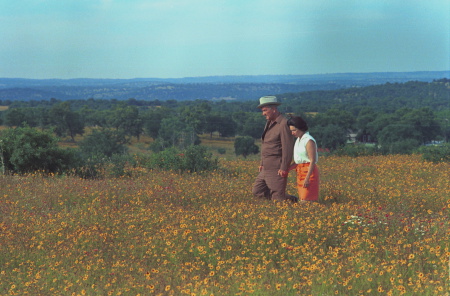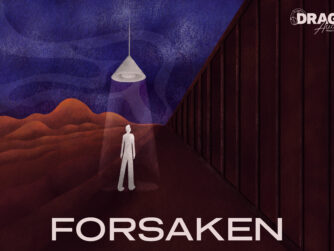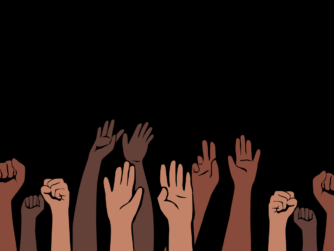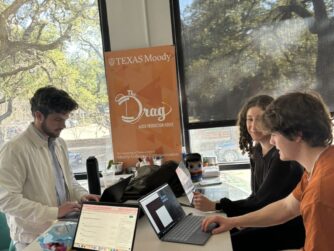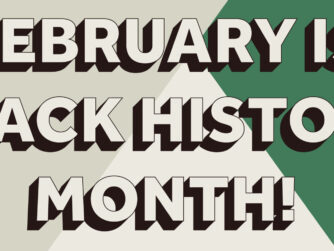Fenced off by barbed wire on a sprawling plot of land at the end of a bumpy red dirt road sits a ranch-style house, off-white with dark red trim, about an hour’s drive from Austin, Texas. That’s my home. We built it when I was in second grade after my dad decided our red double-wide trailer wasn’t cutting it for the two of us. A small man-made pond on the west side of the property used to have fish, but now it mostly just keeps the cows hydrated…when there’s actually water in it. Hundreds of tall pine trees fill the back of the property, flanking two more ponds and a run-down old house that my second-great-grand-aunt (according to Ancestry, at least, but in my family she’s just “Aunt Emma”) lived in until her death in 1970.
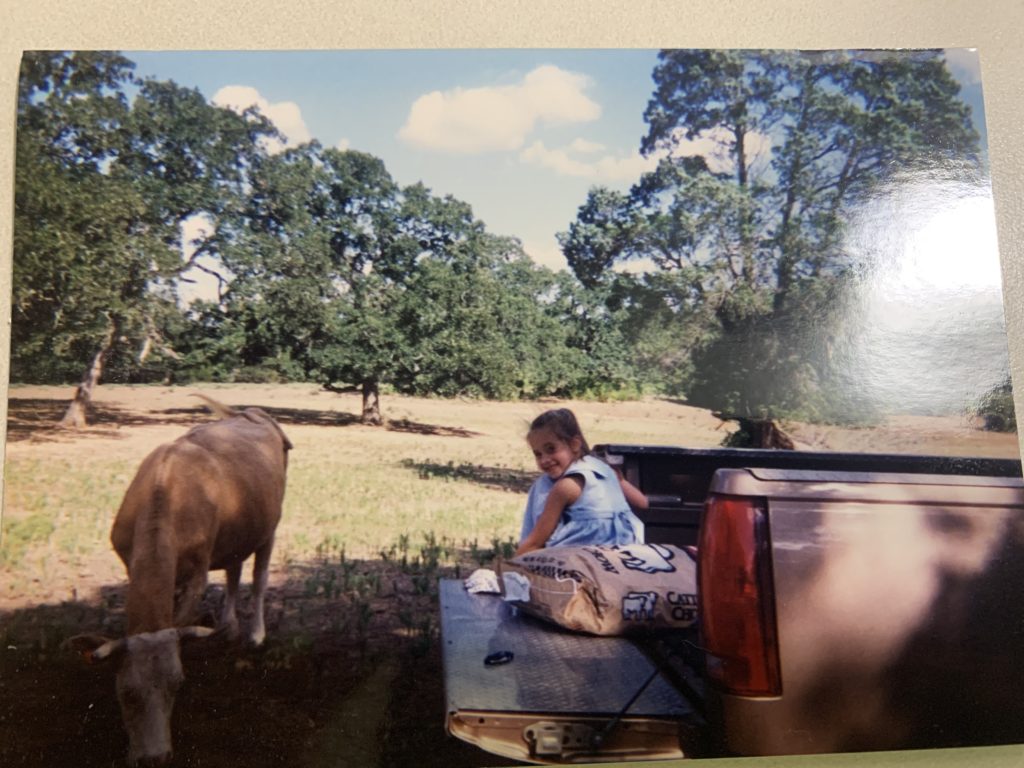
It’s a big place, but my childhood always felt like a modest upbringing. And although she came from a little more money than I did, it’s pretty similar to the way a former First Lady grew up, with her dad in a rural Texas home.
“I would quite naturally explore the woods and climb trees and do all sort of things that you might speak of as tomboy things without thinking of it in that way.”
That quote easily could have come from me, but it’s from Lady Bird Johnson, who recalled her childhood years in the piney woods that surrounded her East Texas home, a pre-Civil War structure her family called “The Brick House.” It was bigger than our small home, with tall white columns and not one but two porches.
A century after Lady Bird’s childhood, I spent nearly 19 years running around the 80 acres of land surrounding our home, exploring Aunt Emma’s old crumbling house, sitting in the deer blind with Dad, scraping my knees on the unforgiving red dirt road, picking the yellow spring flowers we called “Easter flowers,” learning to skip rocks and tossing feed pellets at the cows.
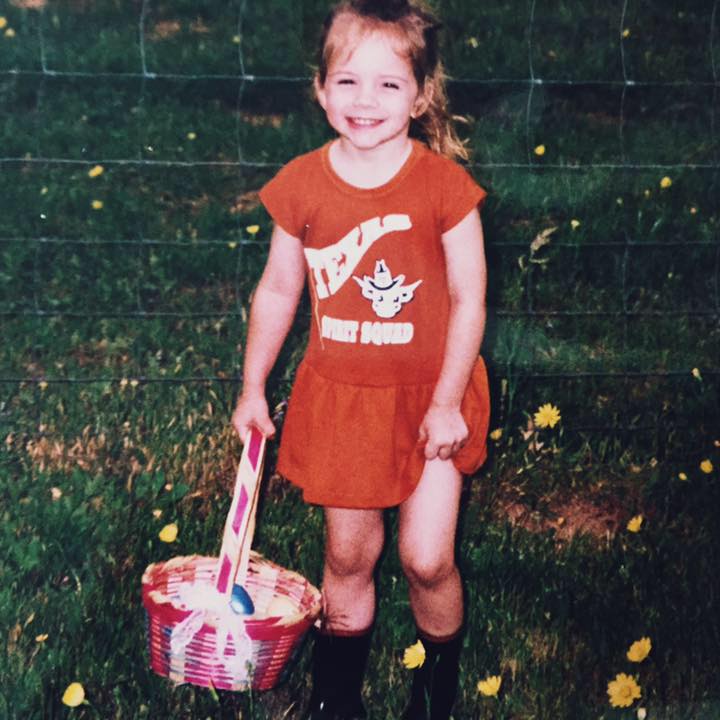
Eventually, after years in the country, I packed up and headed to Austin, moving into Jester Dormitory at the University of Texas. After my dad left, I sat on my twin bed that pulled out from the wall, and I cried. I didn’t get into my first-choice major of journalism right away. I had to go through another application process, but I found my way there, to the only major I thought I’d be good at, the only one I wanted to pursue. I’d always loved writing and reading, and I thought I was decent at it. I had dreams of being a magazine features writer, maybe even writing about music someday (I watched “Almost Famous” a whole lot in high school).
Lady Bird seemed a little less afraid to leave home than I was, though she was shy. She later reflected on how UT helped her come out of her shell. That ended up to be true for me, too. She liked UT so much, after she got her first degree, she decided to pursue another one. In journalism, just like me.
My boss and the founder of The Drag, Robert Quigley, handed me Mike Gillette’s fantastic oral history of Lady Bird Johnson when I started this job in January. I oversee the day-to-day operations of The Drag, working with students to create long-form podcasts, writing scripts, giving feedback and pursuing new stories. Quigley told me he wanted the production house to do a podcast about Lady Bird Johnson, and he wanted to identify a journalist who was a woman who grew up in small-town Texas and went off to journalism school at the University of Texas, like Lady Bird herself. As I worked my way through Gillette’s book, I found so many parallels between my childhood and Lady Bird’s, even though we grew up a century apart. She spoke about the early days of her marriage to Lyndon B. Johnson in passages I read just weeks after I got married. She recalled planting zinnias in the backyard of one of their early Austin homes, as I recalled zinnias being the first flowers my dad ever showed me how to plant. I loved them so much I named a kitten “Zinnia” later. She spoke to Gillette about LBJ’s role in helping some friends who launched Austin radio station KVET, the same station my dad and I listened to every morning on our way into school. I even interned with former KVET hosts at another Austin radio station while in journalism school at UT. On countless occasions, Lady Bird discussed her love for Texas: Its landscape, its people, its plants. I love all those things about Texas, too.
Lady Bird’s real name was Claudia, named after her uncle Claud—a name shared with many of the men on my grandmother’s side of the family, including my great-great-grandfather Claude Farris. About seven miles outside of the city limits of my hometown of Smithville, Texas, sits an unincorporated community called Upton. Running east to west through Upton is Farris Lane, named after my great-great-grandfather. He owned the land that runs along Farris Lane, later partially sold by his son, also named Claude. My grandmother (who I call Meme) and her sister got what was left over when their father died, and her sister later sold her portion, until all that was left was the 80-or-so acres Meme owns. That’s the land that my dad built our house and our life on.
It was the Farris women in my family, specifically my Meme, who kept our place going. When my parents split up, my dad and I were alone on those 80 acres, and he’d tell you that I took care of him just much as he took care of me. Lady Bird did this, too, after her mom died—she cared for the Brick House while her dad worked at his general store.
So when Quigley asked me last month, “What if you are the small-town Texas woman who went to UT? What if you’re the journalist to tell Lady Bird’s story?” It just felt right.
“I knew that we’d find the right person for this story,” Quigley said. “The journalism program at UT produces excellent journalists, including many from small Texas towns. One night while thinking about the podcast, it just dawned on me: Katey should tell the story. She’s the most Texan Texan I know, she’s a graduate of our school, she’s from a small town … and she’s a fantastic journalist.”
I’ve listened to Julia Sweig’s excellent podcast “In Plain Sight” about Lady Bird’s White House years, and it made me even more excited to tell even more stories about this amazing Texas woman. I’m embarking on this project not as a policy wonk or even a history buff, but as a Texan who grew up surrounded by the legacy of both Lady Bird and LBJ, who wants to tell the human side of Lady Bird’s story: Who was she before she became First Lady? Before she was a politician’s wife? Before she even met the president? Who was Lady Bird, really?
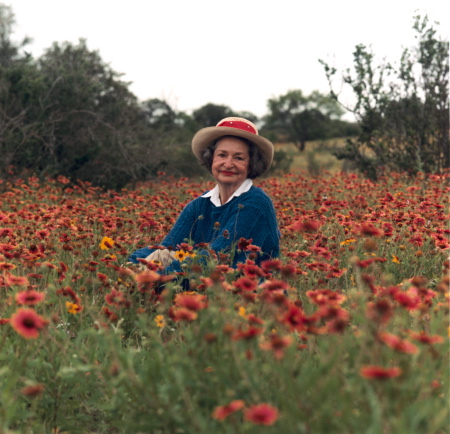
I’m also excited to work with a star student at UT’s School of Journalism and Media, Laurie Grobe. She’ll be joining me this summer and fall to help research Lady Bird’s life and impact.
“This project combines so many of my interests; podcasting, Texas history, archival research and stories of powerful women,” Grobe said. “When Katey offered me a position to work on this podcast, I was thrilled. It felt like everything in my life was falling into place. I’ve admired The Drag since their first podcast and I can’t wait to work there myself, on a project that feels perfect for me.”
I feel extremely fortunate to be working with the LBJ Foundation on this project, with guidance from Catherine Robb (Lady Bird’s granddaughter), Gillette, and other researchers and historians. I’m also looking forward to diving into the archives at the LBJ Presidential Library, an invaluable resource right here on the UT campus.
“Lady Bird Johnson is a fascinating historical figure who is just beginning to get the attention that she deserves,” said Mark Lawrence, director of the LBJ Library. “I’m confident that the Drag podcast will break new ground in understanding this complicated woman and the era in which she lived. The Drag, with its outstanding record of accomplishment, is perfectly suited to the task. I really look forward to the finished product!”
I can’t wait to hear from so many of the people who live where Lady Bird and LBJ once did. I look forward to spending time getting to know folks in Karnack, Johnson City and Stonewall, to get a feel for Lady Bird’s past, and traveling to D.C. to see the city through Lady Bird’s eyes as a Texan girl out of her element.
“Lady Bird,” a sweeping multi-episode podcast series, will make its debut in a few years. It takes time to tell a story about this larger-than-life Texan. I’ll feel right at home digging into her past, and I can’t wait to share my journey with you. Want to help bring this history alive? We could use your help. If you donate here, you’ll directly support this project and give more students a chance to play a part.



